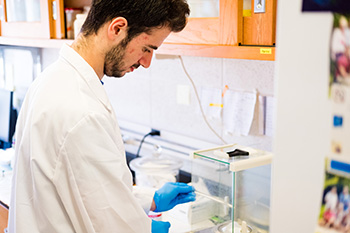SUPER Vision
Students focus on eye diseases during OU's Summer Undergraduate Program in Eye Research
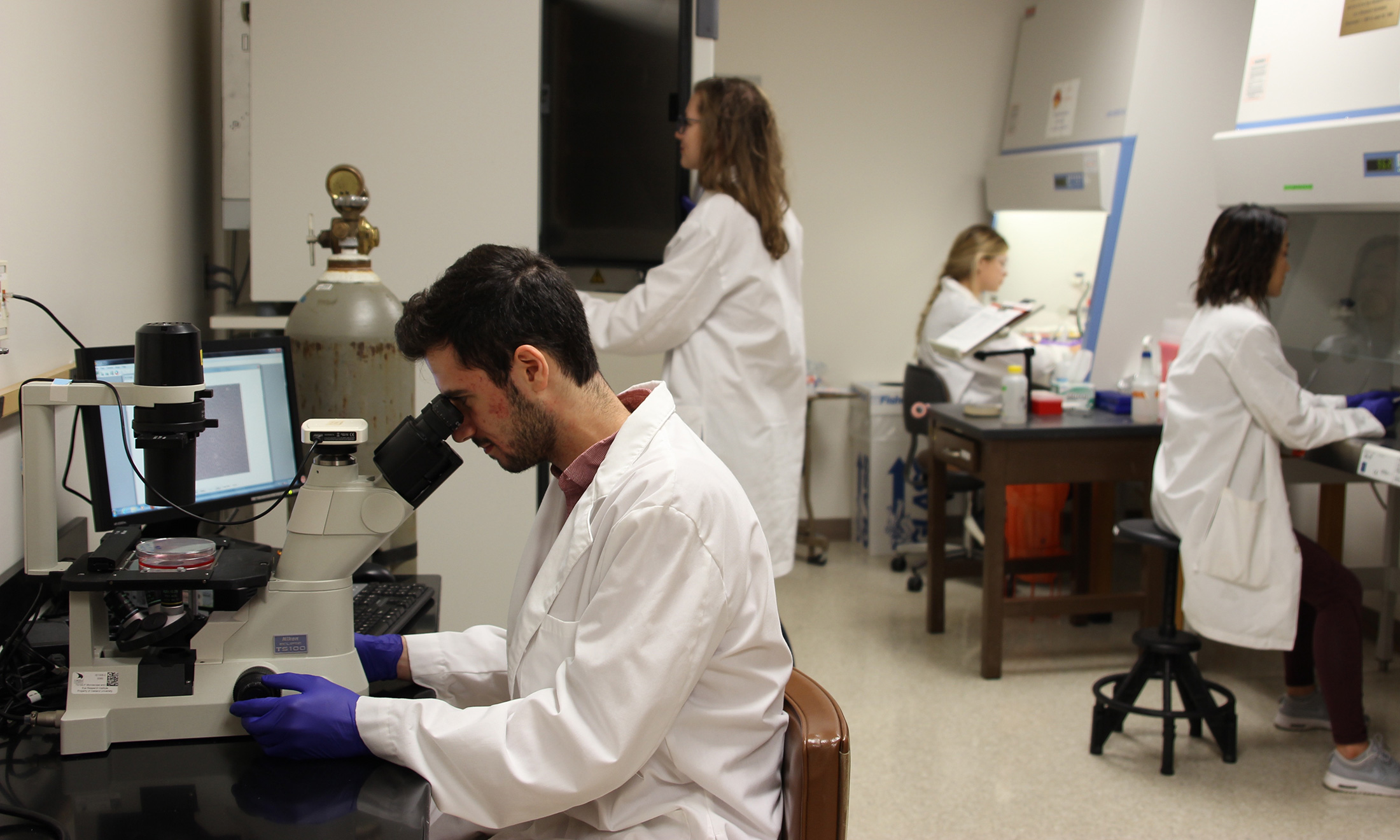
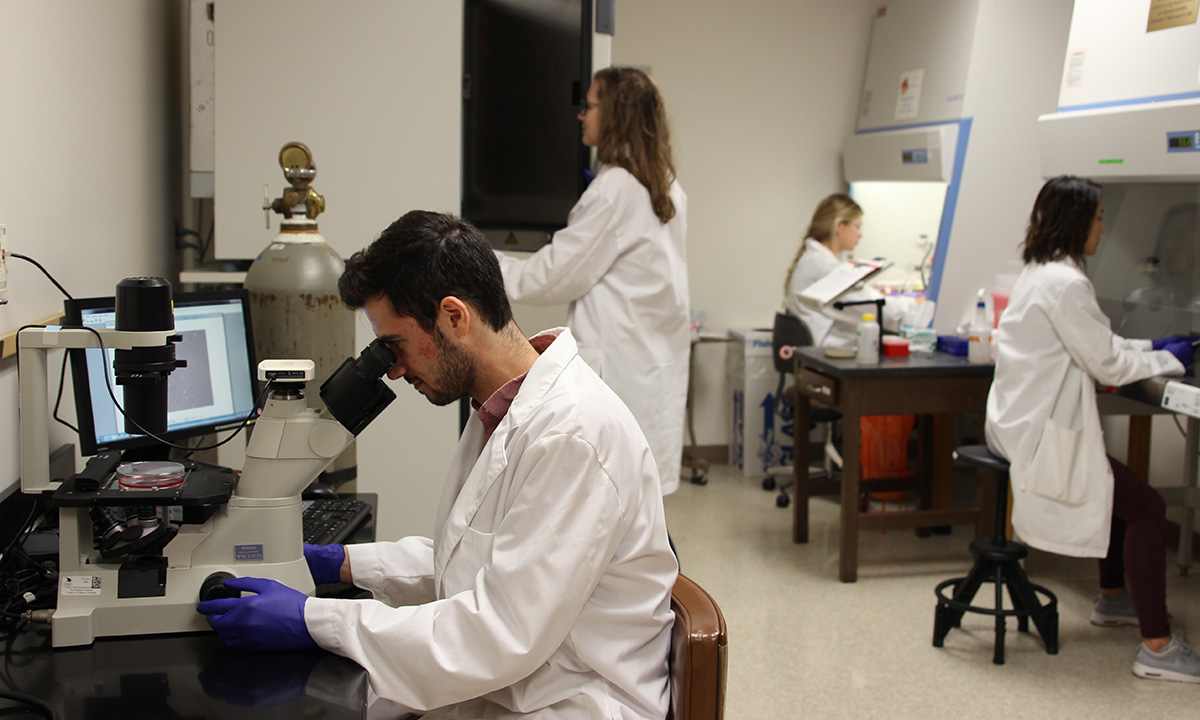
Since early May, a group of six undergraduate students has been looking into the causes of various eye diseases – like glaucoma, cataracts and retinitis pigmentosa – during Oakland University’s Summer Undergraduate Program in Eye Research (SUPER).
SUPER SymposiumThe students will present their research at a public symposium, which takes place from 9 a.m.-noon on Friday, July 27, in room 254 of the Engineering Center. |
This highly selective 12-week program allows students to perform research with guidance from faculty members in the university’s Eye Research Institute (ERI). Using the latest scientific methodologies and equipment, students spent 30 hours per week conducting lab experiments and attending a weekly Vision Science seminar given by ERI and Beaumont Ophthalmology faculty.
The students also receive a research fellowship, as well as training in professional speaking and presentation.
This year’s SUPER students and their research:
Obadah Asbahi
|
- Senior, Biology
- Mentored by Dao-Qi Zhang, Associate Professor of Biomedical Sciences
- Obadah’s research explores the correlation between the expression of the PS6 cell marker and proper retinal function. Among other functions, the retina allows the eye to see color and in low light.
“Along with lab techniques and procedures, I’ve learned the importance of being patient and thorough in collecting data, even if the results were not what I wanted,” Obadah says. “And also how to think outside the box to solve problems with no obvious solution.”
Peter Gaied
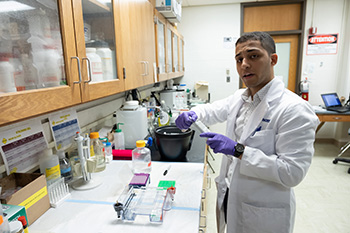 |
- Senior, Biology
- Mentored by Frank Giblin, ERI Director and Distinguished Professor of Biomedical Sciences
- Peter’s research investigates how alpha crystallin proteins in the eye’s lens contribute to the formation of amyloid fibrils. Amyloid fibrils are protein aggregates that have been linked to many diseases, including dementia, Alzheimer’s and Parkinson’s disease.
“The SUPER program was valuable because it taught me how to think like a scientist,” Peter says. “It’s very rewarding to be involved in something that I’m passionate about and also to realize that the discoveries we are making may lead to a breakthrough that could change the world.”
Dominic Mier
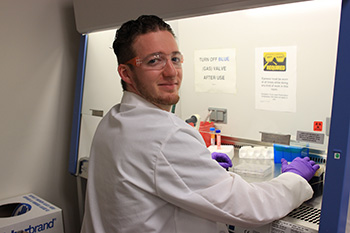 |
- Senior, Bioengineering
- Mentored by Frank Giblin, ERI Director and Distinguished Professor of Biomedical Sciences
- Dominic’s research examines the role that alphaA-crystallin protein plays in the formation of cataracts, a condition in which the eye’s lens becomes cloudy, resulting in blurred vision. Cataracts are a leading cause of vision loss. By age 80, more than half of Americans either have a cataract or have had cataract surgery, according to the National Institutes of Health (NIH).
“Through the faculty lectures and personal experiments, we've learned about the frustrations of failed experiments and the rewards of getting it right,” Dominic says. “My expectations coming in were definitely different than the realizations coming out, but this confirmed my belief that I'd like to pursue a career in research.”
Kaylee Moyer
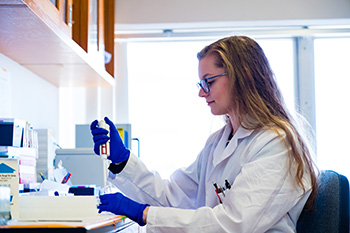 |
- Senior, Health Sciences
- Mentored by Ken Mitton, Associate Professor of Biomedical Sciences
- Kaylee’s research looks at how the growth factor VEGF can impair intercellular signaling. This can lead to retinal diseases such as diabetic retinopathy, which according to the NIH, is the most common cause of vision loss among people with diabetes and the leading cause of vision impairment and blindness among working-age adults.
“This was my first time doing research and I learned just how intricate the process is,” Kaylee says. “You have to plan things out from A to Z before doing anything, and you can go a long time without any results.”
Christian Rizza
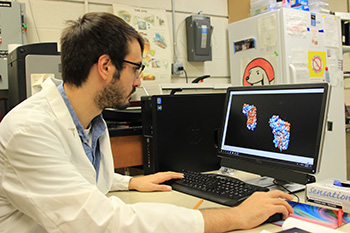 |
- Senior, Biomedical Sciences
- Mentored by Andrew Goldberg, Professor of Biomedical Sciences
- Christian’s research uses computer simulation to gain insight into how the peripherin-2/rds protein functions in the eye, with the goal of using that knowledge to craft new research experiments. This protein is believed to play a role in structuring the photoreceptors that support retinal function.
“Computer-based simulation is a really efficient way to do research,” Christian says. “It allows us to steer resources toward ideas that work. We can try different experimental approaches without having to invest the large amounts of time, energy and money that laboratory research requires.”
Sharon Tan
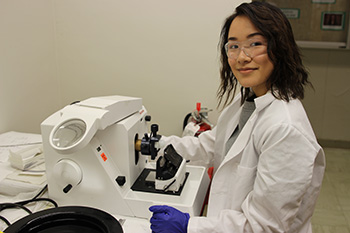 |
- Senior, Biochemistry
- Mentored by Andrew Goldberg, Professor of Biomedical Sciences
- Sharon’s research focuses on a mutation of the Peripherin-2/rds protein which causes photoreceptor death in the retina. The death of photoreceptors leads to vision loss.
“In life, everyone experiences losses,” Sharon says. “Through conducting research and eventually going to medical school to become a doctor, I feel like I’m doing my part to prevent some of those losses, and extend and improve people’s lives.”


 July 24, 2018
July 24, 2018